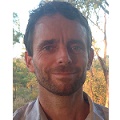
Dr. Simon Quilty is a General and Acute Care physician based at Katherine Hospital in remote Northern Territory. He is the only specialist in a region of almost 400 thousand square kilometres, servicing some of the most remote communities in the world. With research interests broadly around the issues of equity and sustainability, the remote context of indigenous health in which he works provides ample opportunities to explore how new technologies can improve access to health, and how remote hospitals can better meet the needs of the people that they serve. In conjunction with Rural Doctors Association of Australia, he has recently launched the Remote North Australian Hospital Doctors Network, is an honorary research fellow of Menzies School of Health Research, and works with James Cook and Flinders Universities to introduce medical students and junior doctors to the unique riches of the Katherine Hospital and to encourage them to embrace careers in remote health.
ABSTRACT
Title: Telehealth in the NT: changing cultures No cultures are stationary in the world of technological evolution, and the ways in which we communicate are swiftly changing. Despite widely held misconceptions about the way Aboriginal people have dealt with new technologies over recent decades, video communication technologies have been rapidly taken up by people living in remote communities and are very popular, being used as tools to stay connected in a culture where the values of family and home eclipse all else.
Telehealth provides an ideal platform for health care delivery in communities where great distances, extreme environments and workforce realities can make face-to-face clinical input impossible. At Katherine Hospital, telehealth is used to assist in family decision-making where family can not be present, to provide specialist and allied health advice, and to provide specialist advice in acute emergency care. The potential is only just beginning to be realised and more effort is now needed to ensure a sustainable and effective roll-out of this new means of communication.
Title: Frequent attendance to Katherine Hospital – homelessness is the driver
Aim and Objectives:
Katherine Hospital services a remote North Australian region with a large Indigenous population. There are 16,000 ED presentations and 2000 hospital admissions each year. This study aimed to better characterise the underlying clinical and socio-demographic drivers of frequent presentation to the hospital.
Methods:
This was a retrospective case control study identifying all frequent attenders to Katherine Hospital Emergency Department over a 12 month period. We attempted to exclude patients with obvious clinical need for frequent attendance (exclusion criteria included patients under 18 years, non-NT residence, those with a clinical need for frequent attendance such as ED-based infusion services and those with known severe chronic disease). A single episode of ED attendance was randomly selected from each frequent attender and compared to a randomly selected control from the 61% of patients presenting to ED on only one occasion in the 12 month period.
Results:
There were 227 adults who attended the ED at Katherine hospital on 6 or more occasions representing 13% of all ED presentations, and 137 met inclusion criteria. Frequent Attenders were more likely to be admitted to hospital with their presentation (OR = 1.6), be homeless (OR = 16.44), Aboriginal (OR = 2.16), and have alcohol as a contributor to presentation (OR = 2.77). They were more likely to present in hotter, wetter weather, although statistical significance was weak. Cases and controls had similar clinical presentations with high annual death rates (3.6% and 1.5% respectively).
Conclusions:
Katherine Hospital, as with many other remote North Australian hospitals, faces the challenge of providing acute care to extremely disadvantaged patients. With frequent attenders as included in this study 1.6 times more likely to be admitted on each presentation, and presenting on average 8 times per year, a very significant component of the inpatient load is accounted for by these patients. Coupled with high disease burdens, and an estimated one in 4 Aboriginal people in the Katherine region are homeless, frequent attenders represent complex clinical and social challenges. There are opportunities within the hospital to restructure services to better meet the needs of these people. However the real underlying issues that need to be addressed are well beyond the scope of the medical profession.
|
